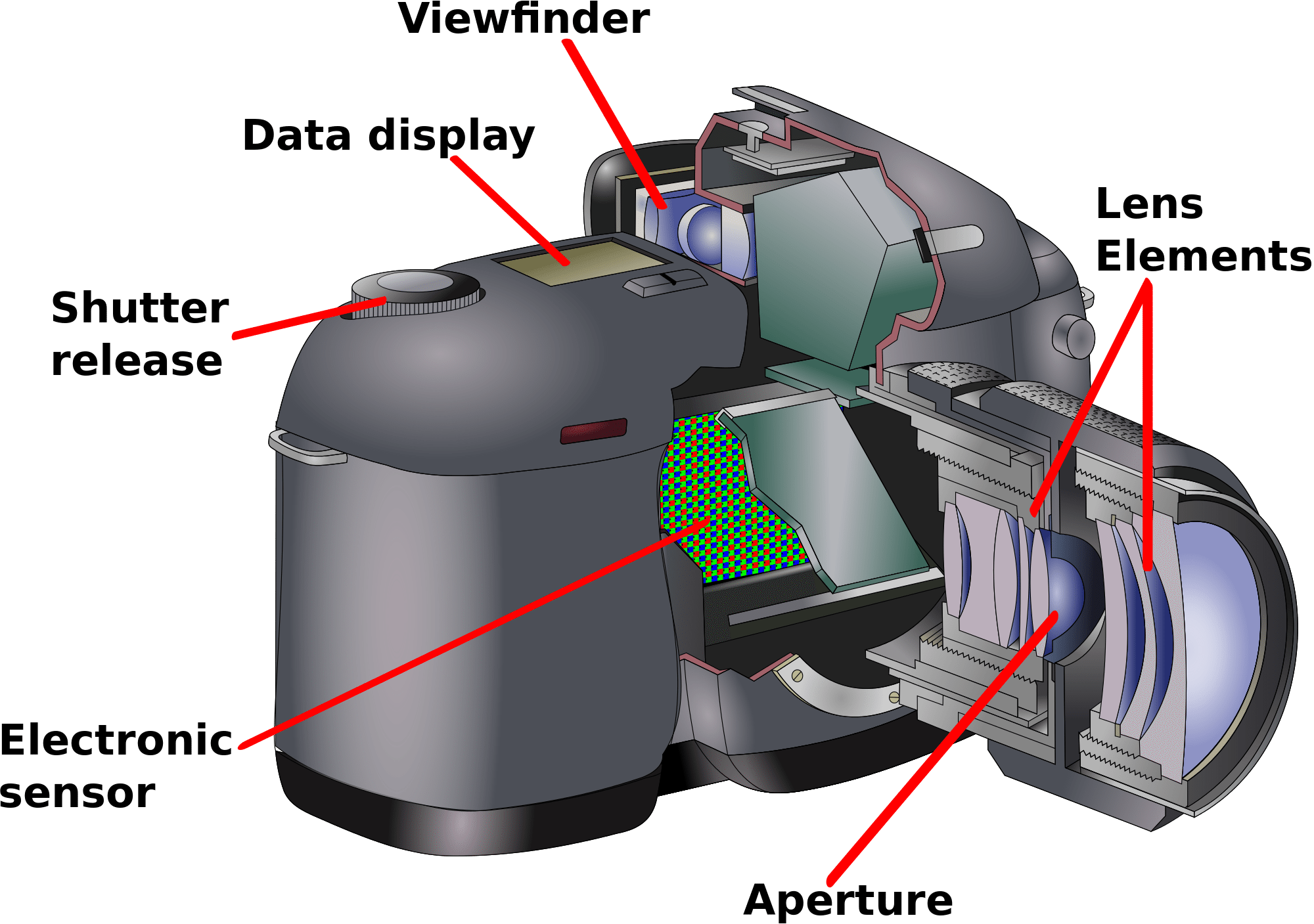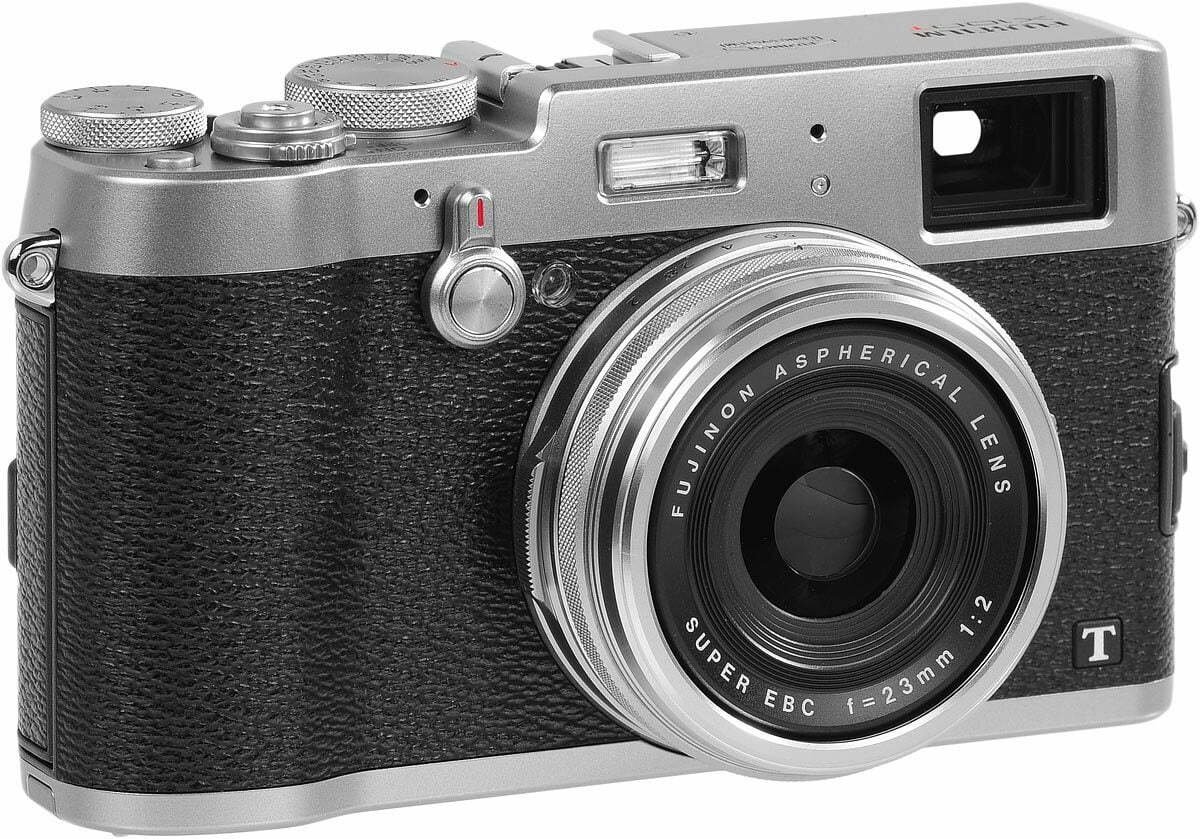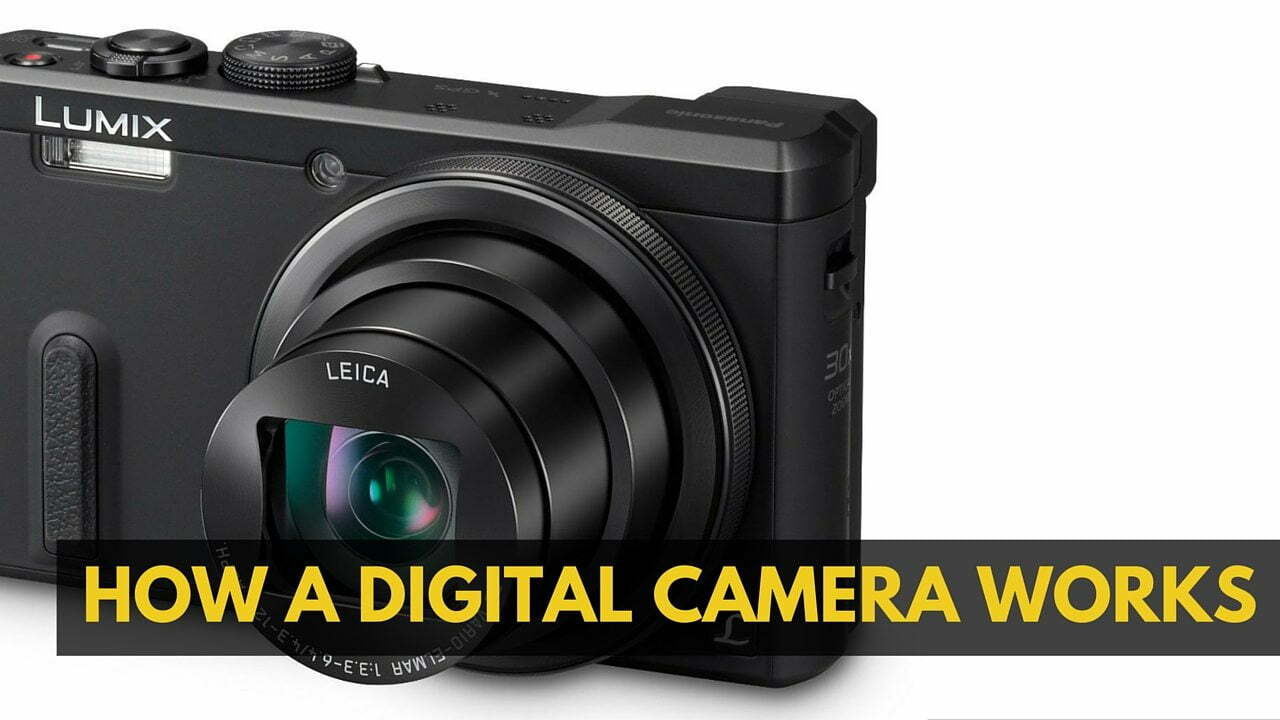You may have some questions about the best digital camera if it is time to buy one.
Answering the question, “how does a digital camera work” isn’t as difficult as it may seem. Whether it is the best travel camera or a simple point and shoot, we have the info below.
In fact, the principles behind a digital camera aren’t all that different than that of a film camera.
Nevertheless, if you’re the kind of person who doesn’t feel comfortable using technology unless you understand what makes it tick, keep reading to learn just how a digital camera captures photos, what are its main components and more in this photography tutorial.
Table of Contents:
- Basics of How a Digital Camera Works
- Digital Camera Components
- How a Digital Camera Works Step-by-Step
Basics of How a Digital Camera Works
The basic process of how a camera works, regardless of whether it’s the best digital camera or any other type of camera, like a compact camera, isn’t all that different: The light from the scene travels through the lens and strikes some sort of light-sensitive surface inside the camera body. But the type of surface that measures the light and the method by which the camera uses that surface to create a photograph separates digital cameras from other types of cameras.
Digital Camera Components

Every type of camera makes use of some similar components, such as a lens and a shutter. When the shutter is closed, no light travels through the lens. But when you press the shutter button to open the shutter, light can travel through the lens to strike the light sensitive material inside the camera. The similarities end there, as a digital camera makes use of numerous components that are unique to digital photography. And they are as follows:
- Image Sensor: The image sensor in a digital camera, which is a semiconductor chip, contains millions of light sensitive pixels, also called arrays, which individually measure the light striking each of them. A color filter sits atop the image sensor, which only allows certain pixels to measure certain colors of light waves. For a film camera, the light sensitive coated plastic strip would record the scene.
- Digital Converter: The data collected in each pixel must be converted to a digital signal, which this converter chip handles.
- Circuit Board: The digital camera carries a circuit board that holds all of the computer chips the camera uses to record data. The circuitry on the board carries the data from the image sensor and other chips to the storage in the memory card. A film camera has no need for a circuit board or a digital converter.
- Display Screen: You’ll use the digital camera’s display screen to make changes to the camera’s settings, as well as to compose the photo and to review photos after they’re shot. Film cameras have no display screen, relying on a viewfinder to frame scenes and on buttons and dials to change settings. Some digital cameras still use a viewfinder for composing the scene, offering the display screen as a second composition option.
How Does A Digital Camera Work: Step-by-Step

No matter whether you’re using a simple waterproof digital camera or an advanced DSLR camera, the process of recording the digital image and storing the data on a memory card is the same. The step by step process by which a digital camera records a photograph is:
- Measuring Light: Press the shutter button to open the shutter, which allows light to travel through the lens and strike the image sensor. The individual pixels on the image sensor then measure the intensity of the light at millions of different spots on the image sensor, creating precise measurements.
- Focusing Light: As the light from the scene travels through the lens, it must be focused precisely onto the image sensor. The various glass elements in the lens will rotate to provide sharp focus. Imprecisely focused light will yield a blurry scene. Digital cameras can use automatic focus where the camera adjusts the glass elements automatically, or manual focus, where the photographer twists a ring to manually adjust the glass elements.
- Converting Light: Each pixel converts the measured light into electrons. A pixel that measures a brighter light will contain more electrons, resulting in a larger accumulated charge. Then an ADC (analog-to-digital converter) chip converts the light signal at each pixel into a digital value.
- Storing Data: With the light from the scene now converted to a digital value, the camera can move the data just as any computer chip moves it, moving digital binary bits through circuitry on the circuit board. When the bits reach the memory card, the camera uses firmware to write the data to the card.
Because a digital camera stores images as digital bits of data, it’s easy to share such images with other devices and other people. Once the photograph is stored as digital bits, you can treat it like any computer file. It’s also easy to make changes to the digital bits using image editing software, allowing you to fix minor problems or add amazing special effects to your images. This is also true for the best video cameras.
No matter if you have one of the best rated digital cameras on the market or a simply good point and shoot camera, understanding how a digital camera works makes it easier to figure out just what you want to do with your images once they’re created. And having so many options to handle your digital photos explains why digital photography has become so popular in the past decade.
Related Articles:



































![Best Point and Shoot Camera in [year] ([month] Reviews) 29 Best Point and Shoot Camera in 2025 (December Reviews)](https://www.gadgetreview.dev/wp-content/uploads/Nikon-Coolpix-B500.jpg)
![Best Underwater Camera in [year] ([month] Reviews) 30 Best Underwater Camera in 2025 (December Reviews)](https://www.gadgetreview.dev/wp-content/uploads/best-underwater-camera-image.jpg)
![Best Digital Cameras in [year] ([month] Reviews) 31 Best Digital Cameras in 2025 (December Reviews)](https://www.gadgetreview.dev/wp-content/uploads/what-is-resolution-on-digital-camera-1.jpg)
![Best Digital Camera Docking Stations in [year] 32 Best Digital Camera Docking Stations in 2025](https://www.gadgetreview.dev/wp-content/uploads/best-digital-camera-docking-stations-image.jpg)
![Best Vlogging Camera in [year] ([month] Reviews) 33 Best Vlogging Camera in 2025 (December Reviews)](https://www.gadgetreview.dev/wp-content/uploads/best-vlogging-camera-image.jpg)
![Best Mirrorless Camera in [year] ([month] Reviews) 34 Best Mirrorless Camera in 2025 (December Reviews)](https://www.gadgetreview.dev/wp-content/uploads/best-mirrorless-camera-image.jpg)
![Best GoPro in [year] ([month] Reviews) 35 Best GoPro in 2025 (December Reviews)](https://www.gadgetreview.dev/wp-content/uploads/best-gopro-image.jpg)
![Best Digital Camera Tripods in [year] 36 Best Digital Camera Tripods in 2025](https://www.gadgetreview.dev/wp-content/uploads/best-digital-camera-tripods-image.jpg)
![Best Canon Digital Cameras in [year] 37 Best Canon Digital Cameras in 2025](https://www.gadgetreview.dev/wp-content/uploads/best-canon-digital-cameras-image.jpg)
![Best Polaroid Digital Cameras in [year] 38 Best Polaroid Digital Cameras in 2025](https://www.gadgetreview.dev/wp-content/uploads/best-polaroid-digital-cameras-image.jpg)
![Best Small Digital Camera Cases in [year] 39 Best Small Digital Camera Cases in 2025](https://www.gadgetreview.dev/wp-content/uploads/best-small-digital-camera-case-image.jpg)
![Best Digital Camera USB Cables in [year] 40 Best Digital Camera USB Cables in 2025](https://www.gadgetreview.dev/wp-content/uploads/best-digital-camera-usb-cable-image.jpg)
![Best Digital Camera Bags in [year] 41 Best Digital Camera Bags in 2025](https://www.gadgetreview.dev/wp-content/uploads/best-digital-camera-bag-image.jpg)
![Best Sony Digital Cameras in [year] 42 Best Sony Digital Cameras in 2025](https://www.gadgetreview.dev/wp-content/uploads/best-sony-digital-cameras-image.jpg)
![Best Panasonic Digital Cameras in [year] 43 Best Panasonic Digital Cameras in 2025](https://www.gadgetreview.dev/wp-content/uploads/best-panasonic-digital-cameras-image.jpg)
![Best Digital Camera Accessories in [year] 44 Best Digital Camera Accessories in 2025](https://www.gadgetreview.dev/wp-content/uploads/best-digital-camera-accessories-image.jpg)
![Best Kodak Digital Cameras in [year] 45 Best Kodak Digital Cameras in 2025](https://www.gadgetreview.dev/wp-content/uploads/best-kodak-digital-cameras-images.jpg)
![Best Video Cameras in [year] ([month] Reviews) 46 Best Video Cameras in 2025 (December Reviews)](https://www.gadgetreview.dev/wp-content/uploads/best-video-cameras-image.jpg)
![Best Compact Cameras in [year] 47 Best Compact Cameras in 2025](https://www.gadgetreview.dev/wp-content/uploads/best-compact-camera-image.jpg)
![Best Digital Cameras with Wifi in [year] 48 Best Digital Cameras with Wifi in 2025](https://www.gadgetreview.dev/wp-content/uploads/best-digital-camera-with-wifi-image.jpg)



















